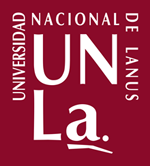
Publishing rules
Editorial and style indications
Authors interested in publishing articles or bibliographic reviews in the Journal of Public Policy Perspectives can send their work through the OJS system by visiting the page magazines.unla.edu.ar/perspectivas or by email to perspectives @ unla. edu.ar
Previously, they must verify that their texts comply with the Editorial Regulations and style rules that are detailed below. Otherwise the texts will be returned to the sender.
Editorial Regulations
Articles submitted for publication are submitted to external evaluators according to the "double blind" system. The evaluation will deal with the substantive quality of the text (theoretical-methodological contributions, new approaches, survey of new aspects of a topic, etc.) as well as its relevance to the subject of the Journal. The reviews will be submitted to the Editorial Committee for an opinion.
The texts submitted for opinion and publication must be original and unpublished. The author will attach a statement guaranteeing that the text is not being submitted for opinion or publication in another written or electronic medium, with the possible exception of articles submitted for publication in foreign publications in a language other than Spanish. The texts will be presented in Spanish. Exceptionally, originals in other languages may be accepted.
The maximum length of the articles is 12000 words including final notes and bibliographic references (with a tolerance of no more than 10%); that of the reviews will be 2000 words under the same conditions.
Basic rules of style
1. Articles
The font used should be Times New Roman size 12, line spacing 1.5, including notes and references.
The name of the author / s will include their institutional affiliation and email address.
Excessively long titles (more than ten words) should be avoided. The text will be preceded by a summary in Spanish and English of 200 words maximum. Five (5) keywords must be proposed, in both languages. The abstract must clearly present the object of the work and its main conclusions.
The literal transcriptions will be made between quotation marks in Times New Roman 12 type, without indentation, unless they exceed three (3) lines.
Excessively long notes, which develop lateral arguments not directly linked to the text, should be avoided. All the notes, without exception, will be identified with correlative Arabic numerals and placed at the end of the text.
It is advised to avoid charts and graphs that use colors. Both will be included at the end of the text, with the indication "HERE GOES THE PICTURE (OR GRAPHIC) No" in the corresponding place in the text. It is suggested to limit the graphics to the bare minimum.
Format: All tables, tables and graphs must be presented in vertical format.
Bibliographic references: In the body of the text and in the notes, they will be made with the last name of the author followed by the year of publication and the pertinent page or pages when it comes to literal transcription (eg: Sassen 2010: 183). The complete identification of the source will be made at the end of the article in the “References” section, as follows: Sassen, Siaska (2010) Territory, authority and rights. From medieval assemblages to global assemblages. Madrid: Katz Editores.
In the case of articles, the text reference is similar to the previous one. The complete reference at the end will be made by placing quotation marks around the title of the article, highlighting the name of the publication and indicating the number and date and the first and last page of the cited article. Eg: Mato, Daniel (2007) “Importance of territorial references in transnational processes. A critique of the idea of ‘deterritorialization’ based on case studies ”. Sociology Studies 23: 35-63.
In the case of chapters in compilations, yearbooks and the like, the text reference is the same as the previous ones; the final will be, eg: Vilas, Carlos M. (2010) “State: politics and economy in global capitalism”. In Daniel Toribio (comp.) The university in Argentina. Lanús: Editions of the UNLa, 2010: 233-266.
In the case of works published in online sources, the author's reference, etc. will follow the preceding rules, adding the electronic address and the date of access. Eg: Hill, General James T. (2004) Statement of General James Hill before the Armed Forces Commission of the House of Representatives of the USA, March 24. http://usinfo.state.gov/ espanol / 04032904.html accessed on April 3, 2004.
The APA style rules will be applied subsidiarily.
2. Bibliographic reviews:
They should contribute to the academic debate and not be limited to a simple synthesis or "panning" of the work. They will be reviews of books (including compilations and anthologies), published no later than one year after the circulation of the respective issue of the Magazine.
In addition to the corresponding style norms, as pertinent, to the articles, they must detail, at the beginning, with indentation, all the editorial references of the reviewed work. Eg: Oscar Madoery, Latin American developments and their controversies. 1st edition. Ushuaia: Ediciones UNTDF, 2016. 317 pp. ISBN 978-987-45975-4-0
In case of compilation, the last name and first name of the compiler will be followed by the abbreviation of his role: comp., Dir., Ed.
Supporting information
Shipping Address
- Prospects magazine of public policies
- Department of planning and public policies
- 29 de septiembre 3901, Lanús
- (B1826GLC) Buenos Aires, Argentina
General information
- Editorial team
- Missión
- Indexing services
- Sections of the magazine
- Magazine history
- Statistics
Polícies
- Editorial policies
- Ethics in publication
- Review process
- Privacy statement
- Open access policy
- Magazine versions





ISSN 1853-9254 (print version) | ISSN 2362-2105 (electronic version)
Director: Carlos Vilas | Publisher: Universidad Nacional de Lanús | Rector: Daniel Rodriguez Bozzani
29 de Septiembre 3901, Remedios de Escalada, Lanús (B1826GLC), Provincia de Buenos Aires, Argentina
